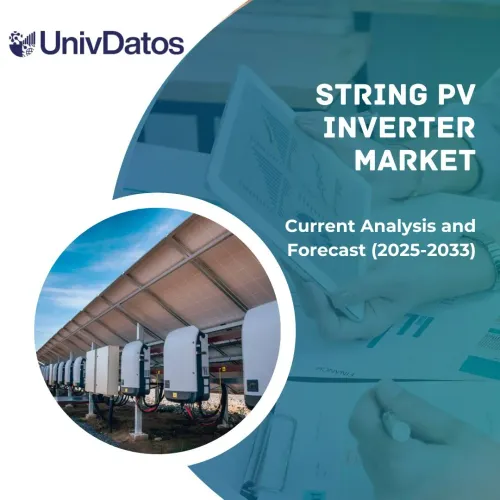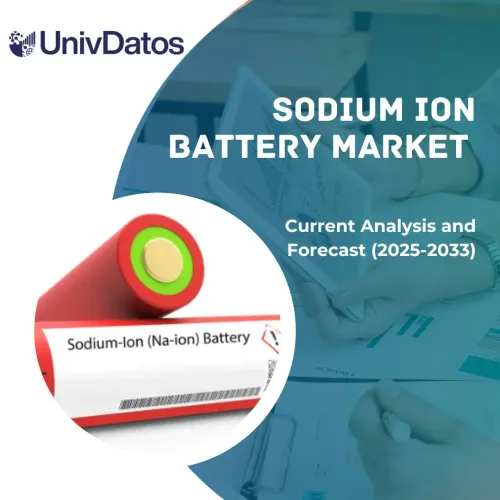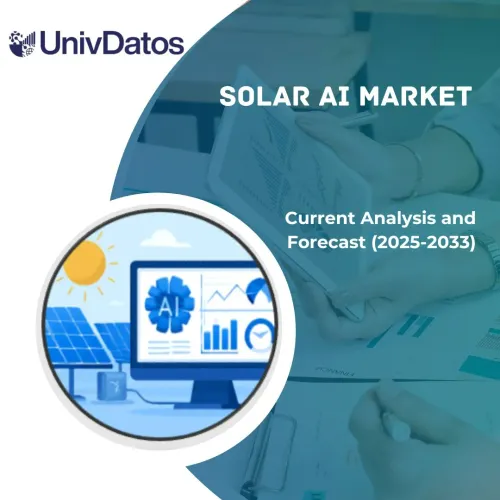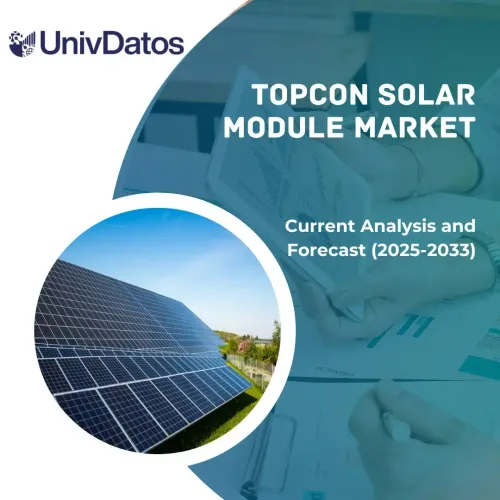- Home
- About Us
- Industry
- Services
- Reading
- Contact Us
Hydrogen Fuelling Station Market: Current Analysis and Forecast (2023-2030)
Emphasis on Station Type (Fixed, and Mobile); Pressure (Low, and High); Application (Passenger, and Commercial); Developer (Private, and Public); and Region/Country
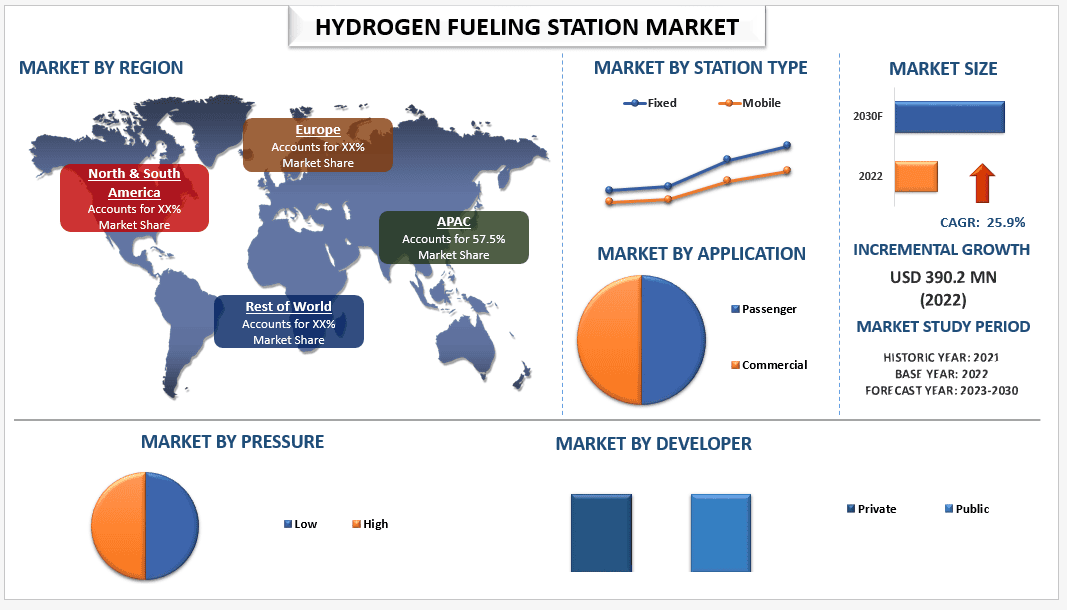
The Hydrogen Fuelling Station Market is expected to grow at a strong CAGR of 25.9% during the forecast period. It is mainly owing to the government programs and incentives to promote cleaner renewable and increasing sales of Fuel Cell Vehicles globally. Increasing fuel cell electric vehicles including hydrogen trucks and buses are acting as a catalyst for the growth of hydrogen fuelling stations. Hydrogen Cars Are More Efficient, Lighter, and Faster. Moreover, a hydrogen fuel cell system (including the hydrogen tank) weighs far less than a battery does which has sparked interest in hydrogen cars as a potential alternative cleaner fuel vehicle. Many Countries have implemented hydrogen energy and the development of Hydrogen fuelling system in their roadmap which will act as a catalyst in the growth of the market during the forecast period.
Despite the benefits the total number of Hydrogen Fuelling Stations worldwide at the end of 2022 was just 814. The biggest factor restraining the market of hydrogen fuel stations is the lack of fuel cell vehicles in the world. Fuel cell vehicles offer longer driving ranges and faster refueling times when compared to battery electric vehicles, however, despite these benefits, the sales of fuel cell vehicles are negligible when compared to electric and gasoline vehicles. For instance – during the first quarter of 2023, the sale of hydrogen vehicles in the USA was just 725 vehicles which is 30% lower when compared to the previous year.
Some of the major players operating in the market are Air Liquide, ENEOS Corporation, Iwatani Coporation, Ballard Power Systems, FirstElement Fuel, Inc., Air Products, Hydrogenics, FuelCell Energy, Linde Engineering, and Nel Hydrogen.
Several M&As along with partnerships have been undertaken by these players to facilitate customers with hi-tech and innovative products/technologies.
Insights Presented in the Report
“Amongst Station Type, the Fixed segment held a dominating share of the market in 2022”
Based on Station type, the Hydrogen Fuelling Station market is divided into fixed and mobile station segments. The fixed station segment acquired a majority share in the Hydrogen Fuelling Station market and is expected to showcase a substantial growth rate during the forecast period. Since the availability. Although the mobile station type is only popular in some countries such as Japan, many companies have started investing in mobile stations in order to lessen the gap between fuel cell cars and fuelling stations. For instance – In July 2023, Hexagon Purus (Oslo, Norway) received an order from a large European OEM to deliver a mobile 700-bar hydrogen (H2) refueling station with a contract value of 3 Million Euro.
“Amongst Pressure, the High segment held a dominating share of the market in 2022”
Based on Pressure, the Hydrogen Fuelling Station market is divided into low and high-pressure segments. The High-pressure segment acquired a majority share in the Hydrogen Fuelling Station market and is expected to showcase a substantial growth rate during the forecast period. The high-pressure segment supplies hydrogen at 700 bar and is used for light-duty vehicles. The sale of light-duty vehicles is around 80% whereas the sale of heavy-duty vehicles is around 20%. High sales of passenger low-duty vehicles are acting as a catalyst for the growth of the high-pressure segmentation in the global hydrogen fuelling station during the forecast period.
“Amongst Application, the Passenger segment held a dominating share of the market in 2022”
Based on Application, the Hydrogen Fuelling Station market is divided into passenger and Commercial segments. The Passenger segment acquired a majority share in the Hydrogen Fuelling Station market and is expected to showcase a substantial growth rate during the forecast period. Around 80% of the hydrogen cars sold worldwide are passenger cars. Around 26,000 hydrogen passenger cars were sold in Asia Pacific region constituting around 60% of the hydrogen passenger vehicles sold globally, followed by North America and then Europe in third place with just 3556 passenger cars by the end of 2021.
Hydrogen Fuelling Station Market Report Coverage

“Amongst Developer, the Public segment held a dominating share of the market in 2022”
Based on Developer, the Hydrogen Fuelling Station market is divided into Private and Public segments. The public segment acquired a majority share in the Hydrogen Fuelling Station market and is expected to showcase a substantial growth rate during the forecast period. As the sale of fuel cell vehicles is very less compared to battery electric vehicles and traditional gasoline vehicles, it is not profitable for private players to open a hydrogen fuelling station. Most of these stations are funded by the government aiming to promote low-emission fuel and to provide infrastructure for the limited number of fuel cell vehicles in their region. Countries such as south Korea and Japan has invested heavily to build hydrogen fuel station infrastructure in their countries in order to promote hydrogen vehicles.
“APAC dominated the Hydrogen Fuelling Station market in 2022”
APAC acquired the majority share in the Hydrogen Fuelling Station market and is expected to witness an exponential CAGR in the forecasted period. It is mainly owing to a large number of Hydrogen Fuelling Station operational projects taking place in China, South Korea, and Japan. Moreover, these countries have the majority number of fuel cell vehicles which are acting as a catalyst in the rising investment for hydrogen fuelling stations in these regions. China has set a target of producing 100 metric tons of hydrogen by 2060; Japan has set a target of 20 million tons of hydrogen per year by 2050; South Korea plans to produce 5.26 million tons of hydrogen per year by 2040. The region possesses significant low-carbon hydrogen production potential. Nearly 40% of the global demand for hydrogen is generated from the APAC region and, within APAC, the majority of the demand comes from China, which accounts for 26% of the global demand.
Reasons to buy this report:
- The study includes market sizing and forecasting analysis validated by authenticated key industry experts.
- The report presents a quick review of overall industry performance at one glance.
- The report covers an in-depth analysis of prominent industry peers with a primary focus on key business financials, product portfolios, expansion strategies, and recent developments.
- Detailed examination of drivers, restraints, key trends, and opportunities prevailing in the industry.
- The study comprehensively covers the market across different segments.
- Deep dive regional level analysis of the industry.
Customization Options:
The global Hydrogen Fuelling Station market can further be customized as per the requirement or any other market segment. Besides this, UMI understands that you may have your own business needs, hence feel free to connect with us to get a report that completely suits your requirements.
Table of Content
Research Methodology for the Hydrogen Fuelling Station Market Analysis (2023-2030)
Analyzing the historical market, estimating the current market, and forecasting the future market of the global Hydrogen Fuelling Station market were the three major steps undertaken to create and analyze the adoption of Hydrogen Fuelling Station in major regions globally. Exhaustive secondary research was conducted to collect the historical market numbers and estimate the current market size. Secondly, to validate these insights, numerous findings and assumptions were taken into consideration. Moreover, exhaustive primary interviews were also conducted, with industry experts across the value chain of the global Hydrogen Fuelling Station market. Post assumption and validation of market numbers through primary interviews, we employed a top-down/bottom-up approach to forecasting the complete market size. Thereafter, market breakdown and data triangulation methods were adopted to estimate and analyze the market size of segments and sub-segments of the industry pertains to. Detailed methodology is explained below:
Analysis of Historical Market Size
Step 1: In-Depth Study of Secondary Sources:
Detail secondary study was conducted to obtain the historical market size of the Hydrogen Fuelling Station market through company internal sources such as annual reports & financial statements, performance presentations, press releases, etc., and external sources including journals, news & articles, government publications, competitor publications, sector reports, third-party database, and other credible publications.
Step 2: Market Segmentation:
After obtaining the historical market size of the Hydrogen Fuelling Station market, we conducted a detailed secondary analysis to gather historical market insights and share for different segments & sub-segments for major regions. Major segments are included in the report as Station Type, Pressure, Application, and Developer. Further country-level analyses were conducted to evaluate the overall adoption of testing models in that region.
Step 3: Factor Analysis:
After acquiring the historical market size of different segments and sub-segments, we conducted a detailed factor analysis to estimate the current market size of the Hydrogen Fuelling Station market. Further, we conducted factor analysis using dependent and independent variables such as Station Type, Pressure, Application, and Developer of the Hydrogen Fuelling Station market. A thorough analysis was conducted for demand and supply-side scenarios considering top partnerships, mergers and acquisitions, business expansion, and product launches in the Hydrogen Fuelling Station market sector across the globe.
Current Market Size Estimate & Forecast
Current Market Sizing: Based on actionable insights from the above 3 steps, we arrived at the current market size, key players in the global Hydrogen Fuelling Station market, and market shares of the segments. All the required percentage shares split, and market breakdowns were determined using the above-mentioned secondary approach and were verified through primary interviews.
Estimation & Forecasting: For market estimation and forecast, weights were assigned to different factors including drivers & trends, restraints, and opportunities available for the stakeholders. After analyzing these factors, relevant forecasting techniques i.e., the top-down/bottom-up approach were applied to arrive at the market forecast for 2030 for different segments and sub-segments across the major markets globally. The research methodology adopted to estimate the market size encompasses:
- The industry’s market size, in terms of revenue (USD) and the adoption rate of the Hydrogen Fuelling Station market across the major markets domestically
- All percentage shares, splits, and breakdowns of market segments and sub-segments
- Key players in the global Hydrogen Fuelling Station market in terms of technology offered. Also, the growth strategies adopted by these players to compete in the fast-growing market
Market Size and Share Validation
Primary Research: In-depth interviews were conducted with the Key Opinion Leaders (KOLs) including Top Level Executives (CXO/VPs, Sales Head, Marketing Head, Operational Head, Regional Head, Country Head, etc.) across major regions. Primary research findings were then summarized, and statistical analysis was performed to prove the stated hypothesis. Inputs from primary research were consolidated with secondary findings, hence turning information into actionable insights.
Split of Primary Participants in Different Regions
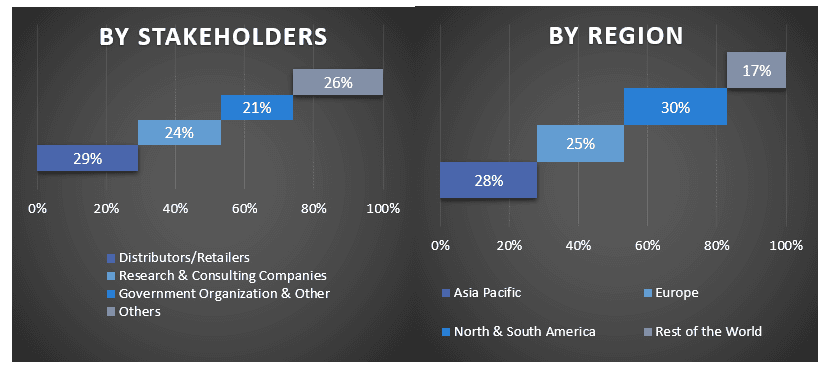
Market Engineering
The data triangulation technique was employed to complete the overall market estimation and to arrive at precise statistical numbers for each segment and sub-segment of the global Hydrogen Fuelling Station market. data was split into several segments & sub-segments post studying various parameters and trends in the areas of Station Type, Pressure, Application, and Developer in the global Hydrogen Fuelling Station market.
The main objective of the Global Hydrogen Fuelling Station Market Study
The current & future market trends of the global Hydrogen Fuelling Station market were pinpointed in the study. Investors can gain strategic insights to base their discretion for investments on the qualitative and quantitative analysis performed in the study. Current and future market trends determined the overall attractiveness of the market at a regional level, providing a platform for the industrial participant to exploit the untapped market to benefit from a first-mover advantage. Other quantitative goals of the studies include:
- Analyze the current and forecast market size of the Hydrogen Fuelling Station market in terms of value (USD). Also, analyze the current and forecast market size of different segments and sub-segments
- Segments in the study include areas of Station Type, Pressure, Application, and Developer.
- Define and analysis of the regulatory framework for the Hydrogen Fuelling Station industry
- Analyze the value chain involved with the presence of various intermediaries, along with analyzing customer and competitor behaviors of the industry
- Analyze the current and forecast market size of the Hydrogen Fuelling Station market for the major regions
- Major countries of regions studied in the report include Asia Pacific, Europe, North & South America, and the Rest of the World
- Company profiles of the Hydrogen Fuelling Station market and the growth strategies adopted by the market players to sustain in the fast-growing market
- Deep dive regional level analysis of the industry
Related Reports
Customers who bought this item also bought

